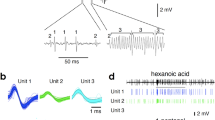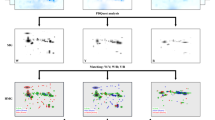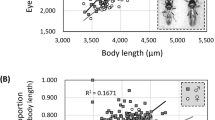Abstract
As a cephalopod, Octopus vulgaris is capable of the fastest and some of the most varied colour changes in the animal kingdom ; yet there is a remarkable lack of evidence for these being used in courtship or mating displays of the kind associated with brightly coloured vertebrate animals. Courtship colour display by a less studied octopus (probably O. horridus) has been observed by Young1, and the dramatic ‘zebra’ pattern of the decapod, Sepia offitinalis, which is used both in courtship and as a threat between males, is well known.
This is a preview of subscription content, access via your institution
Access options
Subscribe to this journal
Receive 51 print issues and online access
$199.00 per year
only $3.90 per issue
Buy this article
- Purchase on Springer Link
- Instant access to full article PDF
Prices may be subject to local taxes which are calculated during checkout
Similar content being viewed by others
References
Young, J. Z., “Courtship and Mating by a Coral Reef Octopus O. horridus” (unpublished).
Aristotle, see D'Arcy Thompson's The Works of Aristotle translated into English, Book V, 6, 541b (Oxford 1910).
Racovitza, B. G., Arch. Zool. Exp. Gen., 2, 23 (1894).
Wells, M. J., and Wells, J., J. Exp. Biol., 36, 1 (1959).
Boycott, B. B., and Young, J. Z., Pubbl. Staz. Zool. Napoli, 27, 232 (1955).
Young, J. Z., Proc. Roy. Soc., B, 149, 463 (1958).
Author information
Authors and Affiliations
Rights and permissions
About this article
Cite this article
PACKARD, A. Sucker Display of Octopus . Nature 190, 736–737 (1961). https://doi.org/10.1038/190736a0
Issue Date:
DOI: https://doi.org/10.1038/190736a0
This article is cited by
-
The making of an octopus arm
EvoDevo (2015)
-
Cephalopod neurobiology: an introduction for biologists working in other model systems
Invertebrate Neuroscience (2013)
-
Light-emitting suckers in an octopus
Nature (1999)
-
Ventilation rate and copulation in Octopus vulgaris
Marine Biology (1973)
Comments
By submitting a comment you agree to abide by our Terms and Community Guidelines. If you find something abusive or that does not comply with our terms or guidelines please flag it as inappropriate.



